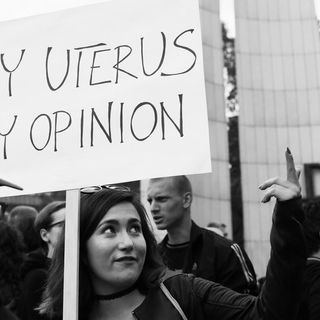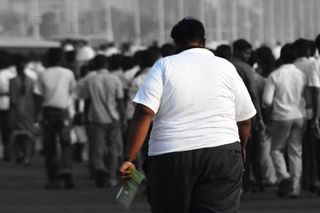
Obesity in India Is on the Rise While Hunger Increases Worldwide
An inactive lifestyle and unhealthy diet are to blame.

As an increasing number of people suffer from hunger around the world, in India, more people are becoming obese. At the same time, the number of undernourished in the country is declining.
These findings were published in a report titled “State of Food Security and Nutrition in the World 2019” and was issued by the United Nations’ Food and Agriculture Organization, in collaboration with the International Fund for Agricultural Development, the UN Children’s Fund (UNICEF), the World Food Programme and the World Health Organization.
In 2018, approximately, 820 million people across the world did not have enough to eat, an increase from 811 million in 2017, which is the third year of increase in a row, the report states.
In India, on the other hand, while in 2004-2006, 22.2% of the country’s population was undernourished, in 2016-18, it came down to 14.5%. However, in 2012, while the prevalence of obesity in the adult population was 3%, it increased to 3.8% in 2016.
According to The Centre for Disease Control and Prevention, being obese can put an individual at a higher risk of type 2 diabetes, coronary heart diseases, strokes, osteoarthritis, cancer and overall poor quality of life.
But what is contributing to the country’s obesity problem? An article in LiveMint says that an inactive lifestyle and unhealthy diet are to blame. “White bread, white rice, phulkas … the overall intake of simple carbohydrates is huge. The widespread availability of fast food is also a problem,” Ambrish Mithal, chairman and head of the department of Endocrinology and Diabetes, at Medanta, the Medicity, Gurugram told LiveMint. It also states that as people continue to rise higher in social order, the less they work by hand. “Whatever little movement we do is paid activity, like going to the gym or yoga,” Tina Sapra, a Gurugram-based nutritionist and founder of the DoctorDiet clinic added. “Taking a 1-hour exercise class lulls us into thinking we’ve done enough when we actually should be turning our entire day into a mini-workout if we want to maintain a healthy weight,” she says.
Related on The Swaddle:
Childhood Obesity and Malnutrition
Furthermore, the report found girls and women score worse on nutritional indicators compared with boys and men. In Bangladesh, for instance, household survey data reveal that men tend to have much smaller dietary energy shortfalls compared with women.
“Of growing concern is the coexistence of underweight or stunted children with overweight mothers in the same households in various low- and middle-income countries, such as Bangladesh, Ghana, India, Kenya and Peru,” the report states. This suggests that there is an increase in inequality in economic and social access to resources. The combination of different inequalities contributing to stunting and overweight phenomena have been linked to maternal age at first birth, maternal short stature, family size and socioeconomic status.
UNICEF states that a third of women of reproductive age in India are undernourished. An undernourished mother will inevitably give birth to an undernourished baby, perpetuating an intergenerational cycle of undernutrition.
This might explain why currently, India has the slowest rate of decline among emerging economies and most countries in Asia when it comes to the number of children who are stunted. In the past decade, stunting has reduced only by 1% among children below five in the country, and if it continues at the current rate, by 2022, 31.4% of Indian children under the age of five will be stunted.
Besides being born to undernourished mothers, most of the country’s problem of child stunting can be attributed to the fact that they are born to teenage mothers. As per a study stated in the article, “Children born to adolescent mothers are at risk of being undernourished. Adolescent pregnancy is related to child undernutrition.”
Related on The Swaddle:
Sleep Quality, Not Just Quantity, Linked to Childhood Obesity
This conclusion was derived based on a study of 60,096 Indian women to assess at what age they first got pregnant. It was found that 25% of them were in the age group of 10-19 years, or just adolescents, when they became mothers, as per data derived from the fourth National Family and Health Survey (NFHS-4).
And the effects are not just limited to their children. Adolescent mothers are as likely to be affected — researchers found that they could be underweight, as well as anemic.
Like the current UN Food Security report, this study also mentioned that besides the age of the mother, other reasons for stunted children being born to adolescent mothers included a poor maternal nutritional status (low nutrition levels during pregnancy), less access to health services and education levels.
Therefore, to improve maternal and child nutrition, it would not only help if there are, “Interventions to increase age at first marriage, age at first birth, and girl’s education,” but also improvement of quantity and nutrient level of food consumed in the household. It would also help if the focus is on increasing women’s access to basic nutrition and health services, their access to water and sanitation facilities and lastly, an effort to empower them to prevent pregnancies that occur too early, too often and too close together.
Anubhuti Matta is an associate editor with The Swaddle. When not at work, she's busy pursuing kathak, reading books on and by women in the Middle East or making dresses out of Indian prints.
Related


Eating to Gain Weight Isn’t Always Healthy, But More Women Are Doing It
